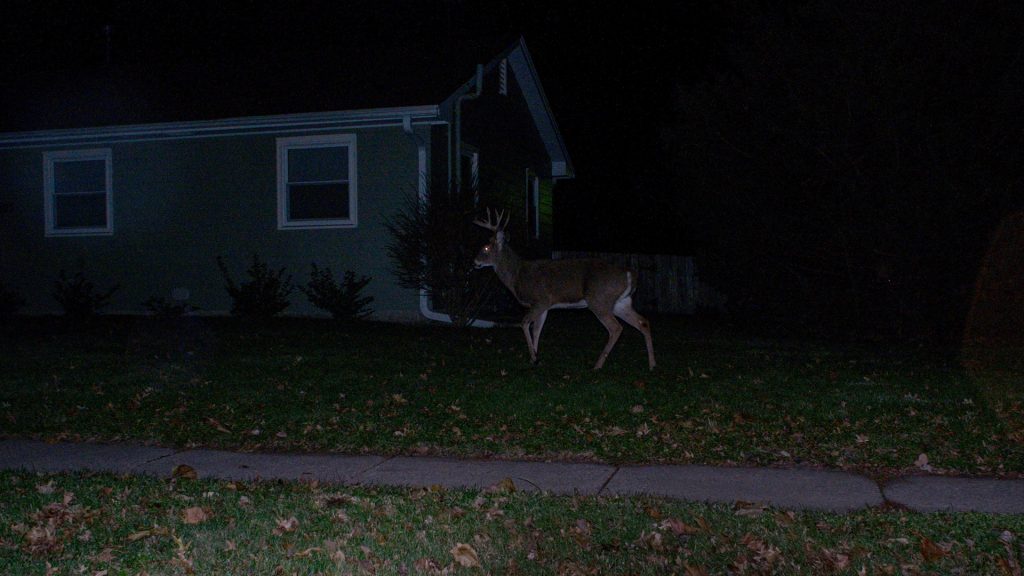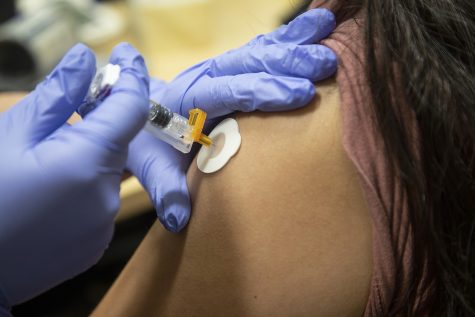‘Zombie deer disease’ threatens Iowa deer
Dubbed ‘Zombie deer disease,’ the neurological condition is spreading through Iowa but doesn’t pose an immediate threat to local populations. Experts fear it could spread to humans.
February 26, 2019
Commonly known as “Zombie deer disease,” a fatal brain disease has been spreading through Iowa deer, and experts are growing concerned that the disease could spread to humans.
Chronic wasting disease is a neurological disorder that primarily affects animals of the Cervidae family, including deer, elk, and moose. The disease causes degeneration of the brain, and it is always fatal. The disease can spread through direct contact between animals as well as through the environment.
The wasting disease was first confirmed in Iowa in 2013, said Terry Haindfield, an Iowa Department of Natural Resources wildlife biologist. Since then, the disease has spread to four Iowa counties: Allamakee, Clayton, Wayne, and Dubuque.
Steve Woodruff, the DNR wildlife biologist for Johnson County, said the disease poses a threat of spreading to Johnson County, and officials are taking precautions to stop it.
“It may or may not get here,” Woodruff said. “If it does, it will probably take several years.”
RELATED: Public to give input on city’s deer-reduction plan
The DNR regularly tests random samples from deer across the state, he said, and so far there have been no positive samples found in the county.
To try to stop the spread of the disease, Woodruff said, the DNR discourages people from feeding the animals, which congregates large numbers of deer together and facilitates the spread of the disease.
Haindfield said the agency encourages hunters not to transport deer carcasses from areas where the disease has been found and to report sick deer.
Despite the efforts of the department, Haindfield said, he expects the disease to keep spreading across the state in the years ahead.
“Nowhere in the United States where it’s gotten a foothold has it decreased,” he said.
Haindfield said the disease hasn’t had a negative effect on deer populations in the state, but as it spreads, it could threaten populations. Once the disease reaches 50 percent prevalence in males and around 23 percent prevalence in females, it could cause the deer population to drop by as much as 10 percent every year.
So far, the disease has been contained mostly to the deer family, and it was long assumed that the disease could not affect humans. However, Haindfield said, there is no guarantee it won’t spread to humans.
“There is a strong species barrier between the deer family and humans,” he said. “We can’t say that is a 100 percent good barrier, so there is a possibility of it crossing over.”
Michael Osterholm, the director of the Center for Infectious Disease Research and Policy at the University of Minnesota, told Minnesota state lawmakers recently that human cases of the disease were probable in the future.
“There are enough data that suggest that it is unclear and it surely is a potential,” Osterholm said in an interview with The Daily Iowan. “The only responsible position we can take is to try to limit the exposure of humans to infected venison.”
In many states, he said, there are not adequate measures to test venison for the disease. Testing is inconvenient for hunters, and there is no way to immediately test meat in the field.
One of the biggest uncertainties around the disease is that it could take years for infected animals to show symptoms, Osterholm said. People could eat infected meat thinking the animal was healthy.
As many as 17,000 Americans may have eaten disease-positive venison in 2018, Osterholm said.
“We could have humans incubating it right now, and we don’t know,” he said. “We would only know 10 years from now.”





















